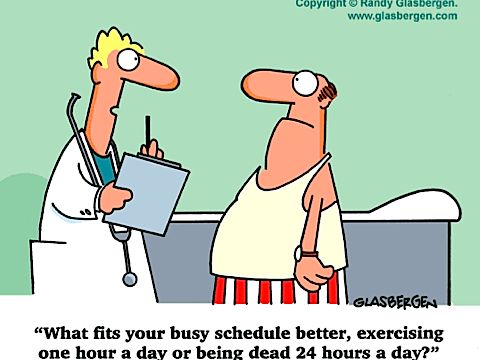Ways To Be Lean For Life

Edited by Heather Hurlock, Best Life
The smell of bacon in the morning might do more than just get you out of bed ... it could help you lose weight. A recent study by the Smell & Taste Treatment and Research Foundation, in Chicago, found a surprising connection between good-smelling food and weight loss. For six months, 1,436 overweight volunteers sprinkled savory or sweet calorie-free crystallized smells (called tastants) onto their food before eating, and they lost an average of 30.5 pounds. "Smells are perceived as tastes, so they increase sensory-specific satiety, making you feel full faster," says study author Alan Hirsch, MD. But you don't need tastants to reap these benefits. Simply slow down when you eat, and focus on the smell of your food, says Dr. Hirsch. You'll eat in a less hurried fashion and recognize when you have eaten enough, which translates to fewer calories consumed and more weight lost.
Eat breakfast, drop pounds
A high-protein breakfast (containing 40 grams of protein) is one key to long-term weight loss, according to new research from Daniela Jakubowicz, M.D., and scientists from Virginia Commonwealth University. In their eight-month study, obese individuals who ate a 600-calorie breakfast and a small lunch and dinner lost an average of 40 pounds. The hormones that transform food into energy prevail at sunrise, so a big breakfast with plenty of protein (such as eggs, lean breakfast meats, low-fat cheeses, and protein smoothies) will speed up your metabolism and reduce hunger and cravings later in the day. No time for a big breakfast? Eat an omelet with smoked salmon or ham and a piece of whole-grain toast (about 300 calories) when you first wake up. When you arrive at work, have a yogurt, blueberries, and a protein smoothie (about 300 calories), says Dr. Jakubowicz.
Avoid the weekend fat trap
Even if you work out every day or eat perfectly during the week, you can sabotage your flat belly by indulging too heavily on Saturday and Sunday. A recent study in the journal Obesity followed two groups of people for one year: one group on a calorie-restricting diet, and the other on a daily exercise program. Those in the CR group stopped losing weight on the weekends, and the people in the exercise group actually gained weight, solely from weekend splurging. The key is to maintain your regular eating patterns on your days off: Try to avoid huge brunches and constant grazing, and consider keeping a food diary to ensure your calorie intake is consistent every day.
Burn fat with spices
Turmeric, a spice common in curry dishes, may treat many inflammatory conditions from skin diseases, Alzheimer's, and cancer. Now researchers at Columbia University say the spice shows promise in fighting obesity. When they fed obese mice curcumin, the yellow-orange antioxidant in turmeric, there was a decline in the animals' body weight and fat, even with higher calorie consumption. The study authors recommend adding one teaspoon of turmeric a day to your diet. The spice is found in yellow mustard and pickles, can be used as a rub on meat, chicken, or fish, and makes a tasty addition to vegetable sautés, soups, and stews.
Smile yourself slim
Being happy keeps you thin, according to a new study in the journal Cell Metabolism. The good-mood hormone serotonin reduces your appetite and directly affects your body's ability to store or burn fat: Low levels of serotonin mean more fat storage, while high levels mean you're more likely to burn fat. Boost serotonin levels with exercise, high-fiber/low-glycemic-index carbs (like oatmeal), monounsaturated fats (like avocados), and foods high in folic acid (like wheat germ, lentils, and spinach), says New York City-based registered dietitian Keri Glassman.
URL: http://health.msn.com/weight-loss/articlepage.aspx?cp-documentid=100216575
















